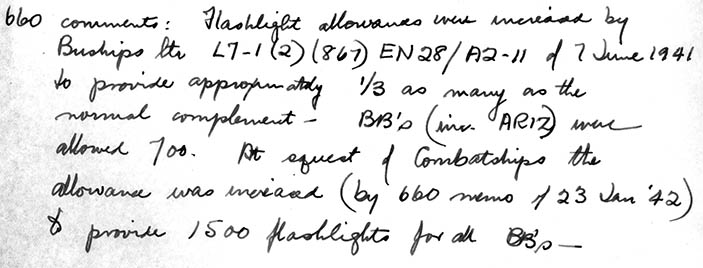BB39/S88/
CONFIDENTIAL |
COPY
ADMINISTRATIVE OFFICE
U.S.S. ARIZONA |
|
Subj: Information on Damage Control
- - - - - - - - - - - - - - - - - - - - - - - - - - - - - - - - - - - - - - - - - - - - - -
(e)
(1) Shortly after the attack began, probably 15 minutes, the forward magazines exploded and all further efforts to close up the ship were fruitless.
(f)
(1) Complete destruction with no survivors from many portions of the ship make it difficult to determine the effectiveness of the watertight compartmentation. The ship settled for several days and escaping air was observed in many areas which might indicate that some spaces were slow in flooding. Statements of the survivors would however, indicate that the flooding was general after the magazine explosion. Water filled turret 4 at a very rapid rate and this would not have been the case if Zed were completely set. Some doors aft could have been ruptured by a bomb which hit turret 4 on the side plate but there is no positive evidence as yet.
(g) No information available.
(h)
(1) Many fires were started by the bomb hits and the whole forward part of the ship was ablaze after the magazine explosion. The decks burned readily and lots of floating oil increased the fire.
(i)
(1) The wind carried the smoke forward in a black cloud obscuring everything forward. Fumes and yellow smoke issued for some time from bomb holes.
(j), (k), (l) and (m)
(l) An early bomb hit down the stack disrupted the fire main and bilge pumps and there was no water with which to fight the fires. C02 was used on the quarter deck to stem small fires but the general conflagration forward was completely out of hand. There was no opportunity to observe the effectiveness of the fire fighting equipment.
(n)
(l) The early destruction of the engineering spaces took all power, light and telephone service from the ship.
(o)
(1) Flashlights were used effectively in the turrets but the supply was not adequate to meet the emergency.
- 2 -
|
